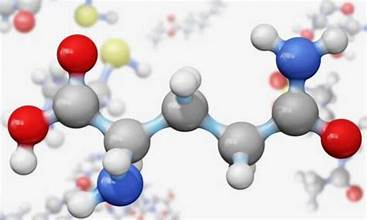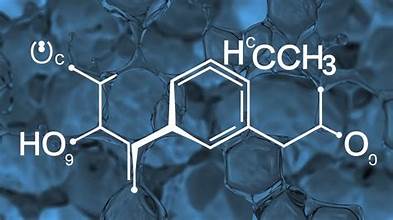HCOOCH CH2 H2O: Understanding the Chemistry and Applications of This Compound

The compound HCOOCH CH2 H2O is an interesting molecule with a variety of potential applications and uses. It is important to fully understand its structure, properties, reactions, and relevance in the broader context of chemistry and industry. In this article, we will explore the chemical composition of HCOOCH CH2 H2O, its uses, and the key principles behind its behavior in various environments. We will also discuss the molecular structure and delve into how this molecule fits into various industrial, biochemical, and laboratory contexts.
Table of Contents
What is HCOOCH CH2 H2O?
HCOOCH CH2 H2O is a complex organic compound that consists of several components. To break it down, the structure includes a formate ester group, a -CH2 group (methane), and a hydroxyl group (-OH) that is part of water. The formula may appear simple, but this molecule can exhibit a variety of chemical behaviors depending on its environment and the compounds with which it interacts.
At the heart of HCOOCH CH2 H2O is the ester functional group, -COO-, which is commonly found in various organic compounds. This functional group plays a crucial role in the reactivity and behavior of the molecule. The CH2 group is a simple alkyl chain that can influence the molecule’s interaction with other substances. Finally, the presence of water in the formula suggests that HCOOCH CH2 H2O may be involved in hydration reactions or be affected by moisture in a given environment.
Understanding this molecular composition is essential for grasping how HCOOCH CH2 H2O functions in both chemical and practical settings.
The Molecular Structure of HCOOCH CH2 H2O
The structure of HCOOCH CH2 H2O can be illustrated by breaking down its individual components. The ester group (HCOO) is a common functional group in organic chemistry. The group is often involved in reactions like hydrolysis or esterification. The CH2 group is a common hydrocarbon chain, and its position in the molecule influences the physical properties of the substance, including its solubility, boiling point, and reactivity.
Moreover, the inclusion of H2O, representing water, suggests that this molecule might be in a hydrated form. Water molecules can be bonded to the compound via hydrogen bonding, which affects its interaction with other substances and plays a role in its overall chemical behavior.
Chemical Reactions Involving HCOOCH CH2 H2O

The chemical reactions that involve HCOOCH CH2 H2O are varied, reflecting its diverse range of chemical properties. One of the most significant reactions it may undergo is hydrolysis, where the ester group (HCOO) reacts with water. In this process, the ester bond is broken, and the molecule is transformed into its constituent acids and alcohols. This reaction is often catalyzed by acids or bases, and it is a fundamental transformation in organic chemistry.
Another potential reaction involves esterification, where HCOOCH CH2 H2O could be synthesized through the reaction of an alcohol and an acid. This reaction is also essential in the formation of various esters used in industry for flavors, fragrances, and as solvents.
The presence of HCOOCH CH2 H2O in aqueous solutions can influence the rate of reaction due to the hydrogen bonding between the water molecules and the ester. This could affect how the compound interacts with other molecules in a solution, especially in biochemical or industrial processes where precise reactions are necessary.
Uses of HCOOCH CH2 H2O in Industry
HCOOCH CH2 H2O and its derivatives have numerous applications in both industrial and laboratory settings. Its ester group makes it useful in the production of various chemicals. For example, esters are often used as solvents, particularly in cleaning agents, paints, and coatings. The ability of HCOOCH CH2 H2O to dissolve nonpolar substances while being relatively non-toxic makes it a suitable candidate for these applications.
In addition to solvents, HCOOCH CH2 H2O can be used in the production of fragrances and flavorings. Esters, in general, have fruity odors and tastes, and as a result, HCOOCH CH2 H2O may be used in the food and cosmetic industries to create pleasant aromas and flavors.
The Role of HCOOCH CH2 H2O in Biochemistry
In biochemistry, compounds like HCOOCH CH2 H2O may serve as intermediates in metabolic pathways. Esters play a crucial role in cellular metabolism, where they are involved in energy production and storage. The ester bond in HCOOCH CH2 H2O could potentially break down into simpler compounds that are further metabolized within the body. Additionally, the compound’s interaction with enzymes that catalyze ester hydrolysis could be important in understanding biochemical reactions that occur at the cellular level.
Solubility and Solvent Properties of HCOOCH CH2 H2O

One of the key properties of HCOOCH CH2 H2O is its solubility in water. Since the compound includes water as part of its molecular structure, it is likely to be more soluble in aqueous environments compared to many other organic compounds. This solubility makes it an attractive choice in formulations where high solubility is necessary, such as in drug delivery systems or chemical reactions that take place in solution.
Moreover, because of its solubility, HCOOCH CH2 H2O could be used as a medium in laboratory experiments to study solubility behavior and the interaction between organic compounds and solvents.
Environmental Impact of HCOOCH CH2 H2O
As with many chemical compounds, the environmental impact of HCOOCH CH2 H2O is an important consideration, especially in large-scale industrial applications. While esters generally tend to be less toxic than other types of solvents, their persistence in the environment can still be a concern, especially if they enter water systems. Thus, it is important to conduct environmental impact assessments when using compounds like HCOOCH CH2 H2O in large quantities to ensure that they do not negatively affect ecosystems.
Studies on the biodegradability of HCOOCH CH2 H2O would provide valuable information about its environmental impact. Biodegradability is a key factor when considering chemicals for industrial use, as substances that break down quickly in the environment are typically more sustainable.
Future Research and Developments Involving HCOOCH CH2 H2O
As with many compounds in chemistry, future research could provide new insights into the potential uses of HCOOCH CH2 H2O. One area that could be explored is its potential in bioengineering and medicine. Given its ability to break down into simpler molecules, it may have applications in drug delivery or as a base compound for creating other useful chemical structures.
Additionally, its interaction with different catalysts and enzymes could be explored further to optimize industrial processes, making them more efficient and environmentally friendly. This is particularly important in industries that rely on chemical synthesis, such as the pharmaceutical or agricultural industries.
Also read Authority Confirms Oak Island Mystery Solved: The End of the Enigma
Conclusion
HCOOCH CH2 H2O is a compound that, although simple in appearance, holds significant promise across various fields, from industrial manufacturing to biochemistry. Its ester group, reactivity with water, and solvent properties make it an invaluable component in a range of applications. Further research into its potential uses and environmental impact will no doubt uncover even more ways to take advantage of its chemical properties.
Understanding the fundamental chemistry of HCOOCH CH2 H2O allows us to appreciate its role in numerous reactions and processes, both in nature and in the lab. By exploring its structure and interactions, we can better utilize it in various practical applications, from improving industrial processes to advancing scientific discovery.




